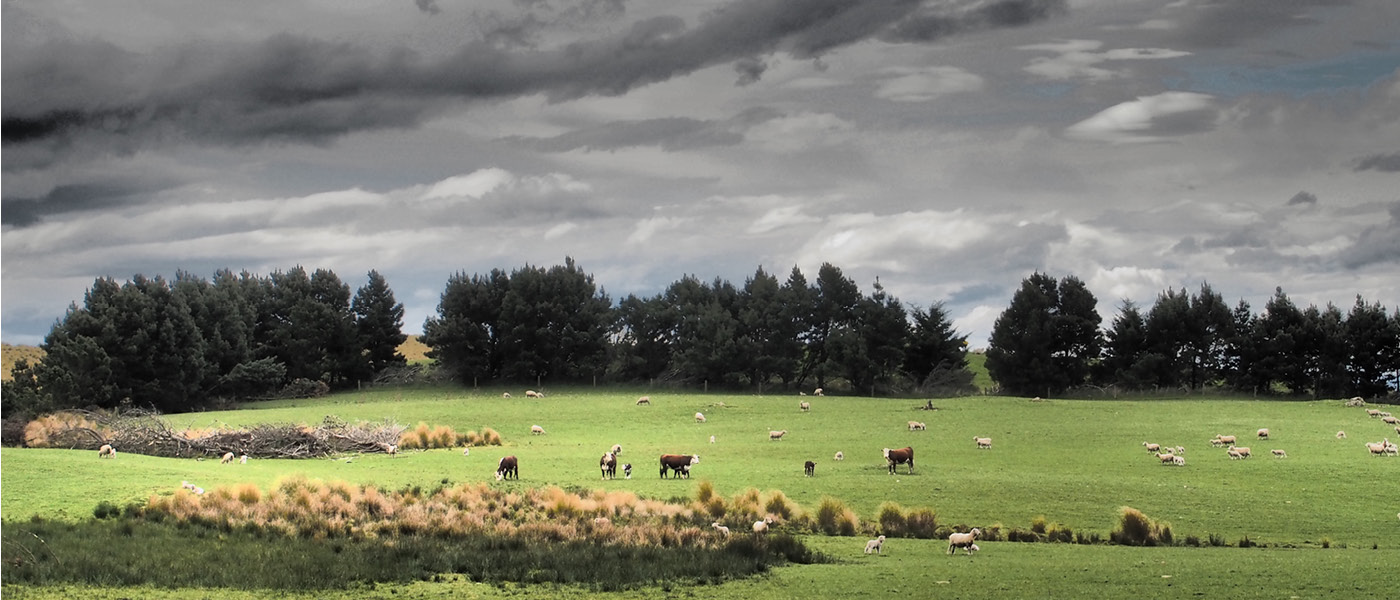
Recent rain around Christmas will lead to unprecedented grass growth. Unfortunately, the conditions promoting good grass growth also promote parasite survival. Parasites like moisture, warmth and shade which are the conditions currently prevailing on most irrigated pasture and on a lot of unirrigated pasture.
Lungworm reared its head last autumn on some properties, and the conditions are ripe for it to happen again. Lungworm can be a debilitating disease affecting weaner deer, lambs and young dairy and beef cattle. The vigilant farmer may notice coughing and weight loss, but sudden deaths in young stock may be the first sign that the disease is showing as an outbreak.
Lungworm larvae are ingested by stock grazing pasture. They migrate from the gut to the bloodstream where they transfer to the lungs. They develop in the lungs into egg-laying adults in 3-4 weeks. The eggs hatch into larvae which are coughed up, swallowed and passed out in the faeces back onto the pasture – and here they further develop into infective larvae to be eaten with grass and thus continue the cyclical process. Traditional faecal egg counting will not alert you to an increasing lungworm burden as it is larvae present in the faeces and not eggs. A modified technique is required to detect lungworm larvae in the faeces.
In young stock, one of the first signs of lungworm infection is coughing exacerbated during exercise such as moving stock. Regular weighing may reveal a fall-off in growth rates, or severely affected animals may struggle to breathe and may stand with their necks extended and gasping with open mouths. Death may follow rapidly. An autopsy would reveal very wet lungs with the airways clogged with masses of adult lungworms.
Treatment for lungworm is an anthelmintic, and while most combination products are effective it is best to consult your vet for advice. Unfortunately, deaths and pneumonia can occur following treatment in heavily infected animals because the sudden death of masses of lungworms can literally choke up the airways. Antibiotics and anti-inflammatories may be indicated in this situation and, again, veterinary advice should be sought.
Longterm effects from a severe lungworm infection may mean slowed growth rates for months (or even the life of the animal) making the prevention of severe outbreaks important. Monitoring growth rates, getting a faecal larvae count done in suspicious mobs, or more frequent drenching, are all tools to prevent an outbreak. Weaner deer and young calves seem especially susceptible, and this Vetlife practice certainly saw cases of lungworm deaths last autumn in weaner deer that had been drenched in February and were dying in April. It had been too long between drenches, highlighting how a policy that had continually worked on that farm did not do so in seasons such as last year and this year.
Regular worming will reduce the larval burden on pasture allowing young stock some exposure so that they can develop some natural immunity as they get older. At Vetlife we have the skills to develop a suitable drench programme for your young stock to promote sustainability.